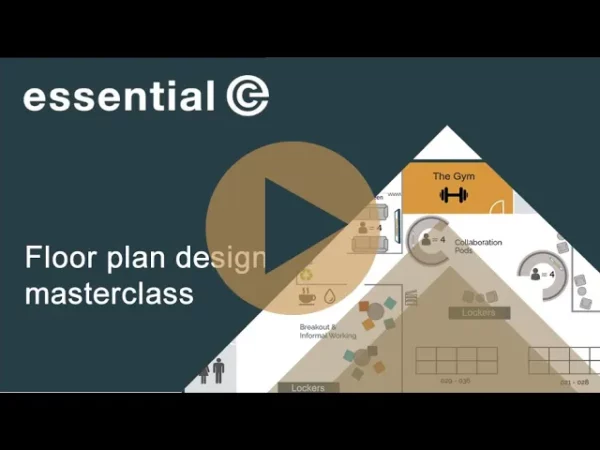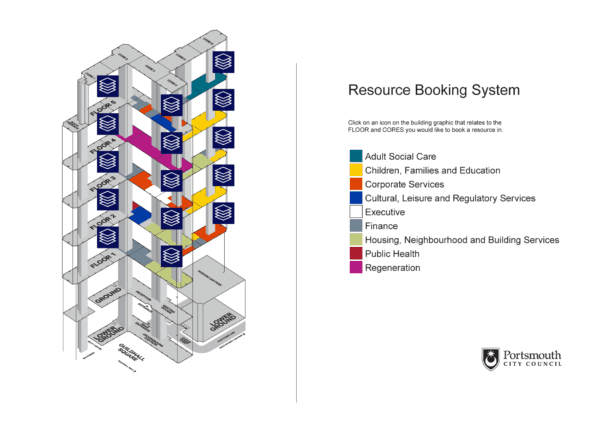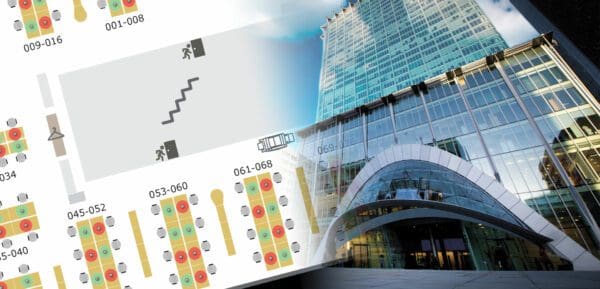Desk booking
How to minimise the impact of changing your office desk layout
In the not-so-distant past, changes to the office landscape were minimal and a visit to the office meant sitting in your usual, dedicated desk.
With hybrid working, however, enterprises are employing a more dynamic approach, giving employees the flexibility to choose where they sit. This approach typically uses unique and logically-organised desk IDs to provide a structured way to identify and book a desk in advance, and then locate their desk on arrival to the office.
But what happens when your desk layout needs to change?
For example, if you use a desk booking system, you might have office utilisation insights that justify the need to expand or reduce how many desks you have.
You might also plan to do an office re-fit that leads to a ‘desk re-jig’.
The physical lifting and shifting of office furniture is just one part of a workspace re-organisation. There are many more considerations that need to be made to ensure a smooth transition to a new desk layout.
In this article, I will look at the steps we recommend to minimise the impact of a desk layout change – especially where you have a desk booking system in place.
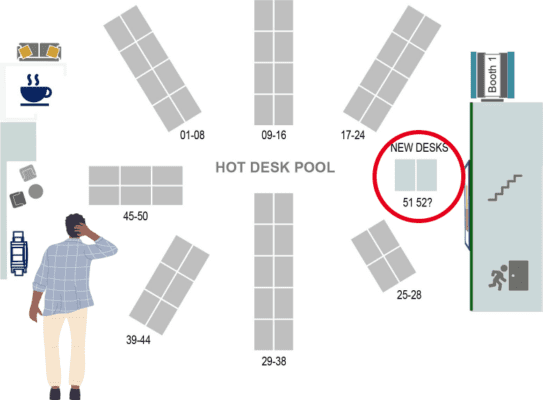
Desk layout scenarios within the office
There are several different scenarios that you might face when adjusting the desk layout of your office.
If you’re lucky, you might be adding or removing desks to the end of an existing sequence, each of which is easy to achieve as there’s little impact on the remaining desks.
Another tip to accommodate future, ad-hoc additions of desks to your floor plan is to plan in advance and for example, leave ‘air gaps’ between logical areas or zones across your office floor. That is, spaces that are separated by walls, room dividers, corridors, etc.
For example, if an area of your office has desks 1-55 in it, but looks as though it may accommodate more, start your desk numbering sequence in the next ‘space’ at 60.
But what if you’re having to add or remove a bank of desks in the middle of an existing desk numbering sequence?
Using out-of-sequence desk numbers can make it difficult for your workforce to find their booked workspaces in a large or unfamiliar office space.
Renumbering your desks to accommodate any change will help keep your hybrid desk booking strategy as streamlined and stress-free as possible, however there’s some things I recommend you do to make this transition as smooth as possible:
Discover best strategies for numbering your desks to support hybrid working
Tips for implementing a new office layout
Communicate your new desk layout in advance
Let staff know well in advance that the desk numbering and office layout is going to change. Explain the reason for the change and then, when available, a timeline for when any steps will be taken.
Create a comprehensive plan for your new office layout
Make a clear plan for the changes that are to be made. Try and figure out the best way to alter the desk locations to minimise effort elsewhere.
Is there any way to better future proof the layout for future modifications? Do the changes need to be made in one go or is a staged approach suitable?
Whichever way you approach it, be sure to create a new layout plan, making this available to staff so that they can locate their desks post-change and in any interim transition period.
Consider any existing desk bookings
If you’re going to re-number your desks, it’s important to think about any existing bookings that might reside on the desks over the coming weeks.
It’s a heavy-handed approach to just cancel everyone’s bookings and get them to re-book once the changes have been made…. It could cause a lot of confusion. Also ask yourself if it’s acceptable to arbitrarily move people.
If Bob has booked Desk 23 because it’s near a window and the bathroom, if the transition moves Desk 23 next to the elevator will this cause discontent?
Update your office wayfinding
Changing your office layout has the knock-on effect of requiring updates to your physical desk signage.
In addition to re-numbering your desks, there may be other wayfinding (both physical and/or electronic) that needs changing as well as any documentation that details desk booking in your company.
You may also need to update any interactive floor plans that underpin a desk booking system.
Discover best strategies for numbering your desks to support hybrid working
Effectively co-ordinate the workload amongst relevant teams
Be sure to pull all available and relevant teams together to share the workload. For example, facilities management may be able to assist with desk numbering and wayfinding changes.
The training department can help with updating documentation. Reception could be trained to help with directions to new locations in the early days of the change within the office environment.
Provide extra support on the ‘transition day’
On the day of switching to the new office layout and numbering system, have staff on hand to assist colleagues with directions to minimise disruption.
Provide a means of ongoing support to address any questions or confusion. Encouraging feedback from colleagues and keeping lines of communication open will help towards achieving a successful transition.
Can technology help with your desk layout?
The simple answer is yes! A desk booking system not only assists with the day-to-day management of a desk estate, it can also help when it comes to desk layout modifications.
Look for the following options to help with any desk layout changes you might have:
- The ability to easily move existing bookings between desks
- Taking desks out of service for a defined period of time to allow for ‘physical’ changes to your office layout
- An easy way to update any interactive floor plans
- Desk devices which can be centrally managed in order to re-number desks quickly (i.e. no need to physically remove existing desk signage)
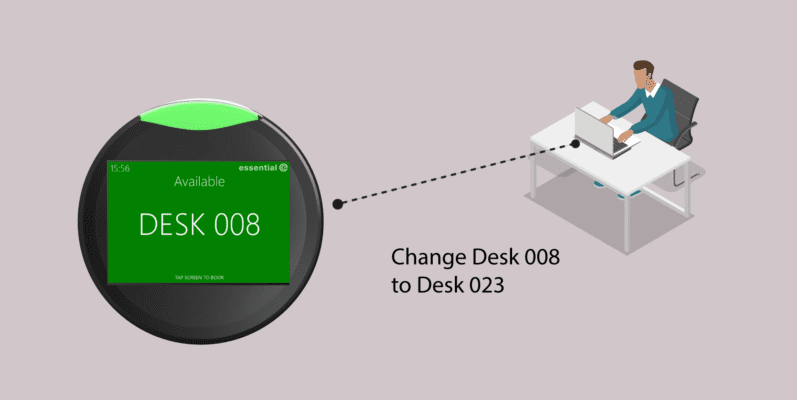
Another strategy you might pursue is to not individually number desks, but to create zones linked to specific departments or ‘area types’, such as ‘Quiet Zone’ or ‘Open area’, that have a specified number of spaces available for booking. Also read our article on pooled resources for more information about this concept in action.
Conclusion
As the ways in which we work continue to change and evolve over time, it’s become ever more important to have flexibility in our approaches to desk quantities and layouts.
Planning and communication are critical parts of executing change and technology can help smooth this process both for those making the changes and those affected by them.
Whatever you plan to do with your desk layout within the office, it’s important to consider all the ramifications of what you are doing, alongside the benefits the changes will afford.
Interested in a future-proof desk booking system?
Let our experts help guide you.







